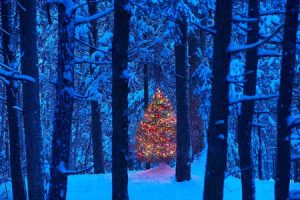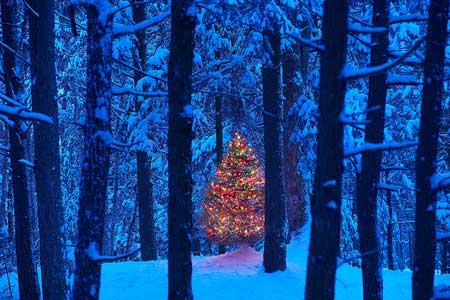 Instead of letting your Christmas tree take up space in a landfill this year, state natural resources officials suggest giving it a second life by putting it to good use for fish or wildlife.
Instead of letting your Christmas tree take up space in a landfill this year, state natural resources officials suggest giving it a second life by putting it to good use for fish or wildlife.
In rural areas, discarded Christmas trees can be put to good use as erosion control or as brush piles to provide resting and escape cover for small animals. In addition to benefiting small game such as quail and rabbits, brush piles constructed of Christmas trees can help birds such as sparrows, towhees and wrens.
“We’re getting to the time of year when the leaves have dropped and the landscape is more open. However, cover is still a vital part of a healthy wildlife habitat,” said Tammy Wactor, wildlife biologist with the S.C. Department of Natural Resources (DNR) based in Clemson. “Although the needles of old Christmas trees will brown and fall off in two or three months, if you get enough trees piled up they will make pretty good cover.”
Brush piles are usually mound or teepee shaped, Wactor said, with the largest material forming the base and layers of small limbs and branches added as filler. The base should consist of sturdy trunks or limbs to allow adequate escape entrances at ground level.
Fisheries biologists with the DNR Freshwater Fisheries Section use discarded Christmas trees to maintain many fish attractor sites, which are clearly marked by buoys, at all major reservoirs in South Carolina. Once on the lake bottom, Christmas trees and other suitable materials provide a surface where aquatic insects live and grow. These insects in turn attract small fish that are fed upon by larger fish.
Please do not toss discarded trees on state fish attraction areas. Some DNR regions collect the trees from municipalities, so that they may “pick and choose” the best trees for their needs, rather than have the public deliver them to a DNR facility. Deliver the tree to designated areas, and state natural resources personnel will replenish sites as needed.
Another alternative is grinding up your tree to use as mulch. Some cities and counties offer tree grinding at no charge after the holidays. Those who choose to take their mulch home can use it for flowerbeds, gardens or around trees and shrubs. To learn about a tree grinding program in your county, contact your local Clemson Extension office-locations and phone numbers are at: http://www.clemson.edu/extension/county/index.html.
Perhaps the best kind of recycling is to buy a live tree and replant it, and then the tree can provide evergreen cover for wildlife year-round. Consumers should keep in mind, however, that many kinds of popular Christmas trees will not survive the hot and humid South Carolina summers.
Among the species that will likely live and prosper here are: Virginia pine, Scotch pine, sand pine, spruce pine, Eastern red cedar, white cedar, Leyland cypress and white pine, which does best in the mountains and upper Piedmont. Two varieties of Arizona smooth cypress developed in South Carolina, Clemson Greenspire and Carolina Sapphire, will also grow well in our climate. Tree species that may not survive here, except in our foothills and mountains, include hemlock, Colorado blue spruce, Douglas fir, Fraser fir and balsam fir.

